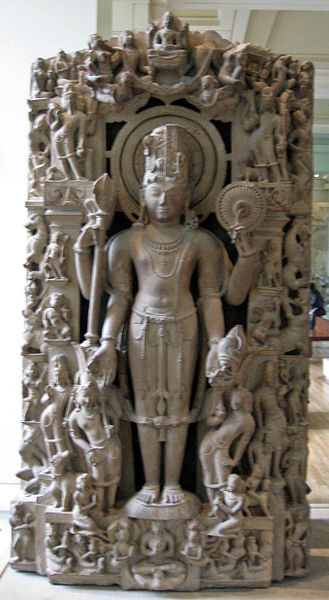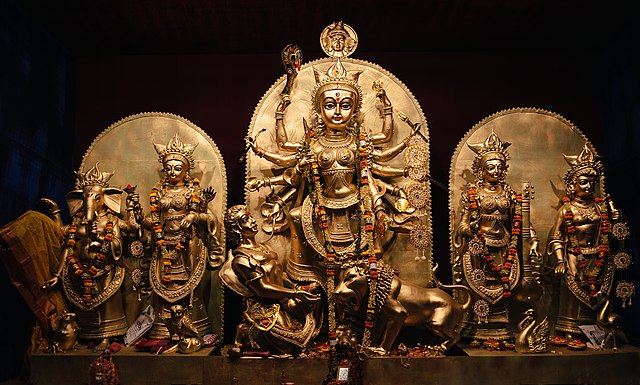Harihara is the dual representation of the Hindu deities Vishnu (Hari) and Shiva (Hara). Harihara is also known as Shankaranarayana.
Painting of Harihara, circa 1825.
Vishnu (holding Sudarshana Chakra) and Shiva (lighter coloured half, wearing tiger skin, holding Trishula) combined in a single Harihara murti, sometimes referred to as Sivakesavaand "Haryadhamurti".
Statue of Harihara. This statue is the mortuary deified portrayal of King Kertarajasa, the first king of Majapahit (1293–1309) from the temple Candi Simping in East Java.
Harihara sculpture, British Museum. The left half represents Shiva (with the Trishula) and the right half represents Vishnu (with the Chakra and Conch).
Hindu deities are the gods and goddesses in Hinduism. Deities in Hinduism are as diverse as its traditions, and a Hindu can choose to be polytheistic, pantheistic, monotheistic, monistic, even agnostic, atheistic, or humanist. The terms and epithets for deities within the diverse traditions of Hinduism vary, and include Deva, Devi, Ishvara, Ishvari, Bhagavān and Bhagavati.
Goddess Durga and a pantheon of other gods and goddesses being worshipped during Durga Puja Festival in Kolkata.
Six Hinduism deities. Surya, Parvati, Hanuman, Lakshmi, Vishnu, and Indra. All of these statues came from India, except Vishnu (from the Thai-Cambodian border). Various eras. National Museum of Scotland, Edinburgh
Shiva (left), Vishnu (middle), and Brahma (right)
The ten avatars of Vishnu, (Clockwise, from top left) Matsya, Kurma, Varaha, Vamana, Krishna, Kalki, Buddha, Parshurama, Rama and Narasimha, (in centre) Radha and Krishna. Painting currently in Victoria and Albert Museum.







